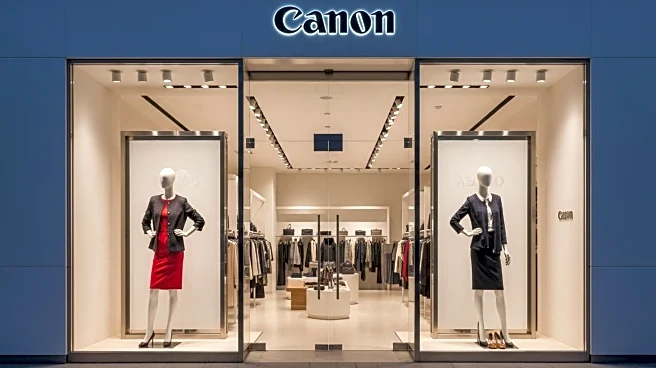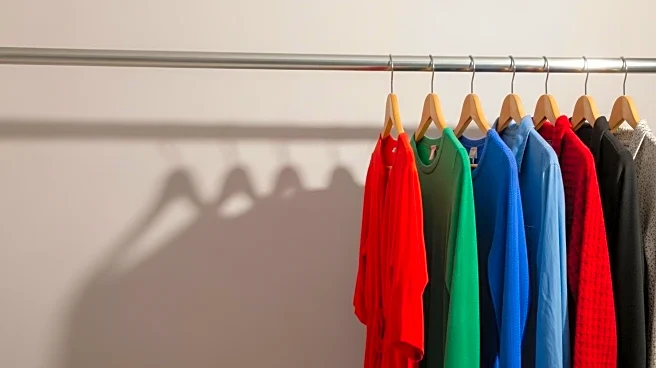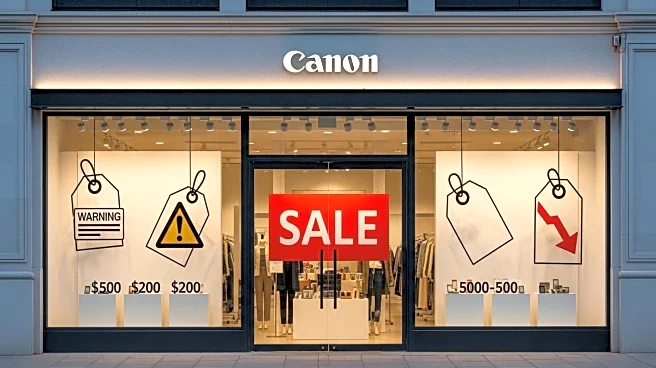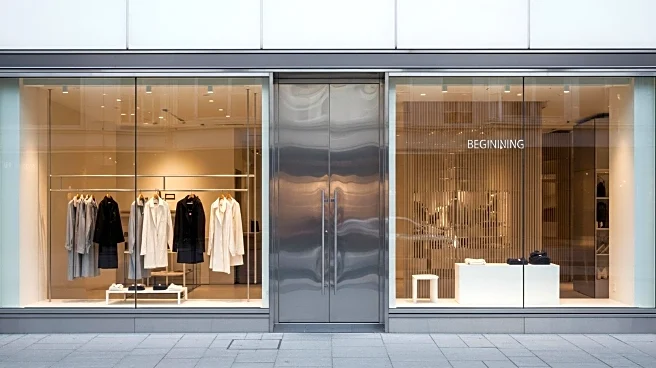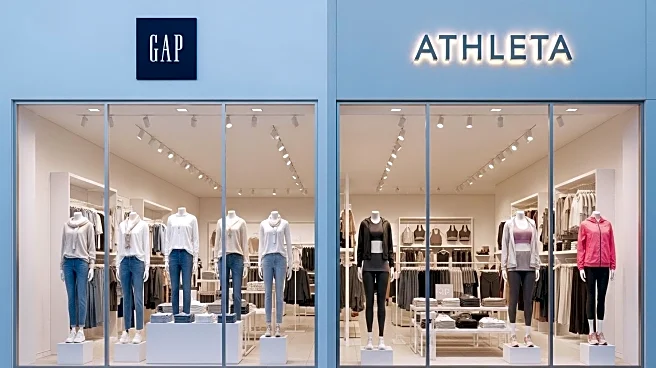What's Happening?
Gap Inc. shares fell after the company reported expectations of shrinking margins for the year, largely due to tariffs impacting its turnaround efforts. The retailer's comparable sales rose by 1% in the quarter ending August 2, missing analysts' expectations of nearly 2% growth. Athleta, one of Gap's brands, experienced a 9% decline in comparable sales, which was worse than the anticipated 4% drop. CEO Richard Dickson has been working to revive the business, with some brands like Old Navy showing progress, while others like Banana Republic and Athleta lag behind. Tariffs have complicated these efforts, with Gap forecasting operating margins could drop to 6.7% for the fiscal year, below last year's figures. The company estimates tariffs could have a net impact of up to $175 million, prompting strategies to reduce reliance on Chinese sourcing and increase the use of American-grown cotton.
Why It's Important?
The impact of tariffs on Gap Inc. highlights the broader challenges faced by U.S. retailers in managing costs and maintaining profitability amid international trade tensions. The company's struggle to balance brand revival with external economic pressures underscores the complexities of operating in a global market. Retailers like Gap must navigate these challenges while attempting to attract and retain customers, which can affect their competitive positioning and financial health. The situation also reflects the broader economic implications of tariffs on U.S. businesses, potentially influencing pricing strategies and supply chain decisions across the industry.
What's Next?
Gap Inc. is likely to continue implementing strategies to mitigate the impact of tariffs, such as diversifying its sourcing and increasing the use of domestic materials. The company may also focus on strengthening its brand appeal to attract new customers and retain existing ones. Stakeholders, including investors and industry analysts, will be closely monitoring Gap's performance and strategic decisions in the coming quarters to assess the effectiveness of these measures. Additionally, the broader retail industry may observe Gap's approach as a case study in navigating tariff-related challenges.
